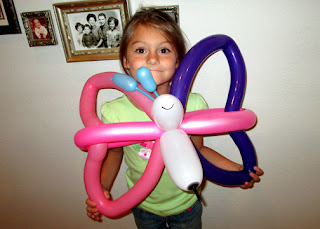To cap off our study of the ancient world, we visited
Lost Egypt, St. Louis Science Center's current featured exhibit. While there, we also watched
Mummies: Secrets of the Pharaohs, an Omnimax film. Tessa enjoyed the many hands-on displays. There were also several small, but interesting artifacts...mostly amulets, shabtis and sculptures of various Egyptian gods. A replica of the Rosetta Stone too. (To see real mummies, visit the
St. Louis Art Museum.)
 |
| May 25 - September 2, 2013 |
 |
| Tessa thought about what kind of things from today's world she would want to take with her to an Egyptian afterlife. Using a magnetic board and picture tiles designed after artwork commonly found on the walls of Egyptian tombs, she placed those items in the hands of servants who would bring them to her in the afterlife. |
 |
| Broken pottery is a common find for archaeologists. Tessa tried her hand at piecing together the fragments of an "Egyptian bowl." |
 |
| Tessa tested how the Ancient Egyptians may have pulled massive stone blocks up ramps to build their pyramids. She found the block on a sled and pulled over wooden slats beneath it was much easier to move than the one without any such device. |
 |
| On our way home from the Science Center, we stopped by Culver's in Eureka where Lollypop the Balloon Artist was twisting balloons. After patiently waiting almost an hour, Tessa finally got her balloon butterfly. There were over 80 kids that day! |















